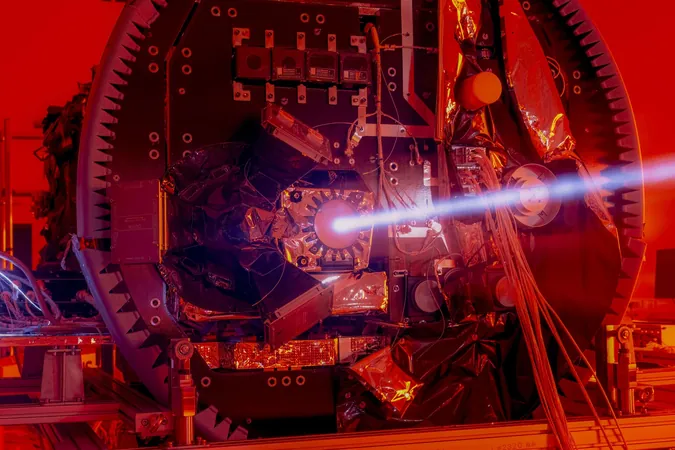
Proba-3 Set to Revolutionize Space Navigation with Laser Precision in Upcoming Launch
2024-11-22
Author: Emma
Proba-3 to Launch on December 4
The European Space Agency (ESA) is gearing up for the anticipated launch of its groundbreaking twin-spacecraft mission, Proba-3, scheduled for December 4 from India. This synergistic duo will utilize advanced positioning technologies, with a laser system that promises millimeter-level accuracy in the vastness of space.
Innovative Laser Technology
Recent infrared imagery illustrates the calibration of the reflected laser beam captured during tests conducted in Belgium by specialists from ESA, MDA, and the Center Spatial de Liège. This innovative technology was refined at Redwire Space in Kruibeke, showcasing the high-stakes preparations leading up to the launch.
Artificial Solar Eclipses
Proba-3's ambitious mission involves creating artificial solar eclipses on demand. The Occulter spacecraft will cast a precisely controlled shadow on its partner, the Coronagraph spacecraft, maintaining this effect for durations of up to six hours. This is achieved by keeping a shadow only 8 centimeters wide on the Coronagraph, stationed about 150 meters away.
Precision Positioning Technology
To maintain this delicate positioning, the satellites will rely on a suite of sophisticated sensors. In addition to inter-satellite radio links and Global Navigation Satellite System (GNSS) receivers, they will employ visual imaging tools and, crucially, a laser metrology system for pinpoint accuracy.
Collaboration and Launch
This revolutionary mission represents a collaboration of over 29 companies across 14 nations, directed by Spanish aerospace firm SENER, with satellite designs by Airbus Defense and Space in Spain and integration efforts led by Redwire in Belgium. The Coronagraph's main instrument is a product of the Center Spatial de Liège, further emphasizing the collaborative international effort behind Proba-3.
PSLV-XL Rocket Launch
Moreover, the launch will be executed using the PSLV-XL rocket, courtesy of the Indian Space Research Organization (ISRO), marking another major step in global space exploration. As Proba-3 prepares for liftoff, experts are eager to see how this advanced technology will reshape our understanding of atmospheric phenomena and contribute to enhanced satellite operations.
Conclusion
Stay tuned, as Proba-3 is set to not only underscore the prowess of international collaboration in space exploration but also potentially redefine our capabilities in astrobiology and astrophysics!









 Brasil (PT)
Brasil (PT)
 Canada (EN)
Canada (EN)
 Chile (ES)
Chile (ES)
 España (ES)
España (ES)
 France (FR)
France (FR)
 Hong Kong (EN)
Hong Kong (EN)
 Italia (IT)
Italia (IT)
 日本 (JA)
日本 (JA)
 Magyarország (HU)
Magyarország (HU)
 Norge (NO)
Norge (NO)
 Polska (PL)
Polska (PL)
 Schweiz (DE)
Schweiz (DE)
 Singapore (EN)
Singapore (EN)
 Sverige (SV)
Sverige (SV)
 Suomi (FI)
Suomi (FI)
 Türkiye (TR)
Türkiye (TR)